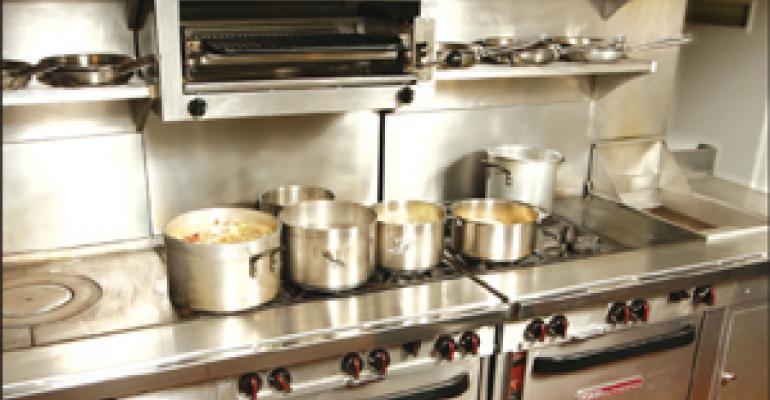Some first-time owner-operators achieve kitchen nirvana—a setup that is well-planned and equipped to meet all their needs—from the start.
Many others have to compromise.
“When you open, you don’t necessarily have the money or the time to do everything right,” said Paul Kahan, executive chef-owner of Blackbird in Chicago. “It only took us nine years to get the right stove on the line.”
Last summer, with Blackbird well established as one of Chicago’s top spots for contemporary American cooking, the time was right to replace aging equipment with new heavy-duty pieces that are more compact, powerful and appropriate for its cuisine. The upgrade is paying off today in increased efficiency, versatility and speed in the kitchen, smoother flow in the dining room, and even higher job satisfaction among the cooks, Kahan said.
“I think people have always been happy with our food and service,” said Kahan, who was named the Best Chef of the Midwest by the James Beard Foundation in 2004. “But what we did get complaints about occasionally was that it took a little long to get the food out.”
The initial challenge was fitting new equipment into the tight space of Blackbird’s open kitchen, where five cooks work shoulder to shoulder in about 15 linear feet. So Kahan yanked out the old, stand-alone pieces and replaced them with space-saving modular equipment. He saved a foot by switching to a narrower wood-burning grill, freeing room for a third oven and more flattop cooking surfaces.
Anchoring the new kitchen is a series of Southbend Platinum equipment: a 32-inch sectional range with a standard oven base and a “French top,” or graduated hot top; a 32-inch sectional range with a standard oven base and six open-top burners; a 32-inch sectional range with a standard oven base with four open-top burners and a partial hot top; a 16-inch fryer; and a 12-inch spreader and cabinet. In addition, mounted above the six-burner range is a radiant-heat salamander. There also is a 24-inch wood-burning grill, fabricated by Avenue Metals Co.
Kahan declined to say how much he paid for the kitchen upgrade. The expense was partially defrayed by what he calls “a mutually beneficial” relationship with Southbend. He spreads “good will” about the company; it uses his photograph in advertisements and on its website.
The open-top burners each produce 33,000 BTUs, the ovens 45,000 BTUs apiece and the French top 62,000 BTUs, making it capable of a center-surface temperature of 900 degrees Fahrenheit.
The importance of firepower cannot be overstated, said kitchen designer Beth Kuczera, president of Equipment Dynamics Inc. in Oak Park, Ill.
“Even when budgets are tight, we recommend that operators get heavy-duty cooking equipment for the heart of the hot line,” she said. “The incremental cost pays off in enhanced cooking efficiency and product quality and supports prompt service and table turnover.”
Tables turn more smoothly now on busy nights, when customer counts exceed 170 covers in the 62-seat dining room, Kahan said, and the impact is evident in the back-of-the-house as well.
“Now we can have a 325 degree Fahrenheit oven if we want to slow cook something,” he said, “and we have room to properly rest our meats now. There’s room for all the sauce pots on the flattops. We can set up a steamer if we wish. Everything is more organized. We used to fight for space on the stoves, but not anymore.”

